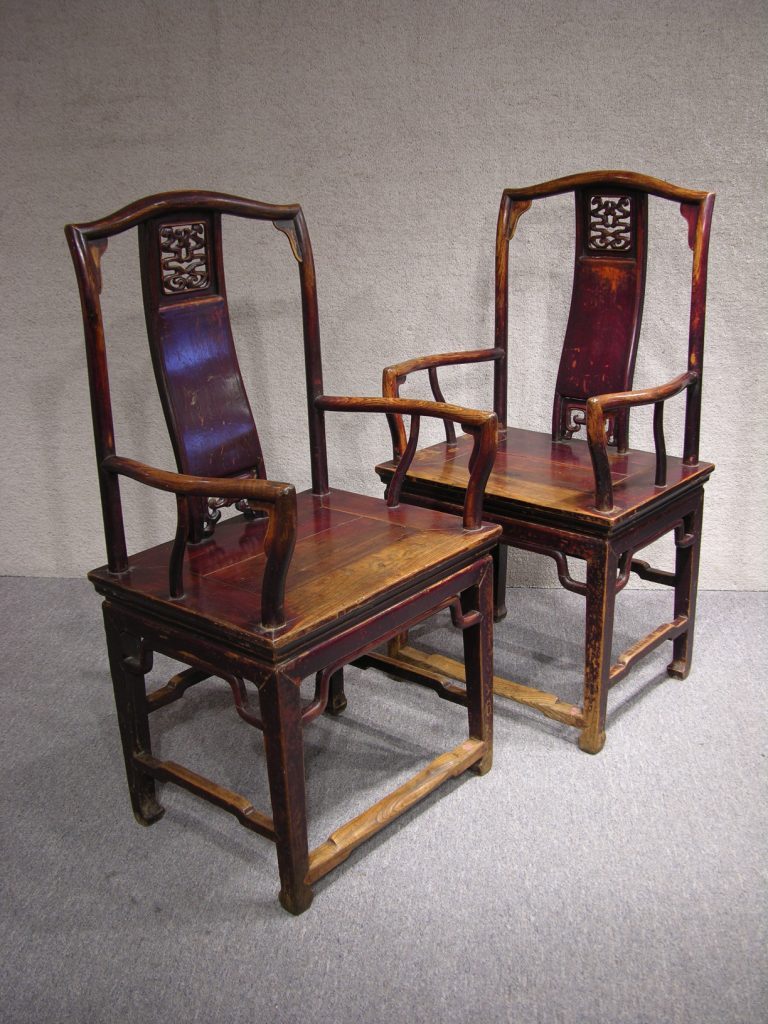
16th/17th C; Sophora (Huai); Shanxi. Of rare extinct wood; tall back and wide seat suitable for today; all-original.
This kind of armchairs is amongst the most prestigious chairs in a traditional household and belongs to the type known as “guanmaoyi” (official’s hat chair), the name deriving from a supposed resemblance to the winged hats which were part of the formal dress of Ming officials. In old Chinese culture, it has the connotations of status and authority.
Each chair is of the waisted, corner-leg construction. It displays a tall, elegant stance, with the seat back well suited to someone with a tall statute. The graceful, undulating S-shape backrest is sectioned off into three parts, with openwork finely pierced ‘chi’ dragons (a motif in China associated with power) at the top, a plain middle section, then a scrolling ‘continuous life’ motif at the bottom. There are shaped spandrels beneath the top rail. The rounded crest-rail, armrests and side-posts together create a charming impression.
The chair has a hard seat panel molded at the edges. Below the seat, the waist and apron sections are made of one piece of wood. Together, they are securely attached to the underside of the seat. The seat is strengthened by decorative, deeply shaped humpback stretchers attached under the aprons and sides of the legs in the front and sides of the chair. The humpback base stretchers are stepped towards the back, the configuration traditionally considered to imply “ascent with each step”, meaning to promote to high places. The legs terminate in horse-hoof feet with the foot stretcher bearing sign the chair was much used.
This pair of chairs is in excellent condition, retaining much of its original rich deep reddish-brown lacquer. Its survival is due much to its strong building material, the Sophora, a wood that was not only dense but also naturally resistant to moisture and insect damage. It was highly sought by early period literati for furniture building material but became extinct from over-use after the Ming period because this tree grew very slowly, only about an inch a year. Today, this wood is not well-known because few furniture made of this wood survived the Yuan and Ming periods to find its way to the West.